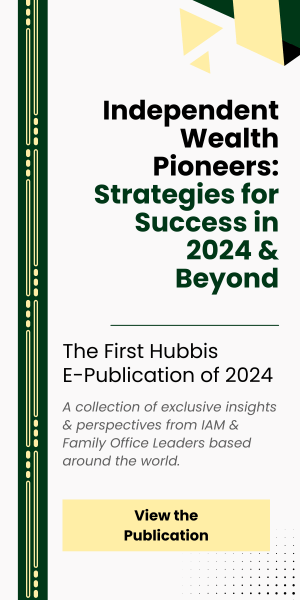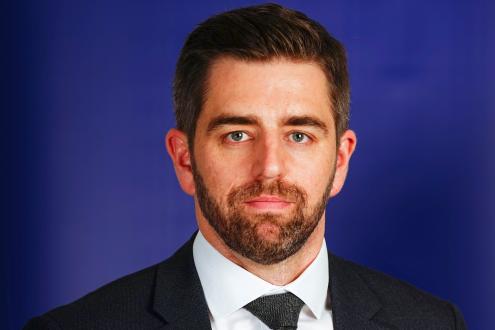Boosting Capabilities and Elevating the Client Experience with Well-Chosen Digital Tools

Mar 29, 2023
As private and institutional clients continue to demand greater technology, service, and ease of access, private banks and other wealth managers are under pressure to advance all aspects of the client journey and experience. Optimised digital client communications are front and centre of outstanding client engagement, and a truly seamless and pleasant client experience. In Asia, there is great optimism about the future growth of economies, markets and private wealth. But while some competitors in the wealth industry will enjoy the fruits, it is also likely that those banks and firms that do not adopt the right technologies, protocols and approaches – or adopt them too slowly - could also be left behind. Hubbis held a virtual event on March 9 during which David Wilson, Principal Director, Asia Wealth Management Lead at Accenture, offered his very considerable expertise as one of the panel of experts. He offered guests a considerable level of detail on digital transformations ideas, objectives and possibilities, and concluded by emphasising the vital importance of advancing digital solutions that truly enhance the business model, either reinforcing the current vision or helping the business model pivot to a more future-proofed strategy. Hubbis has distilled some of his very valuable insights from the discussion in this short review.
Moderator: David, from your 360-degree perspective as a leading consultant in this region on these matters, how would you characterise the state of Asia’s wealth industry in terms of their digitalisation missions and journeys, particularly around client engagement and enhancing the client experience?
David Wilson: Clearly, the communications topic is a big one. To me, it is a subset of the client experience topic, which as one of the speakers has said today is the key differentiator in wealth management, and I agree. Of course, investment performance, track record, reputation, stability (both as a bank or wealth firm and the jurisdiction), the product shelf, the RM and advisor quality, and so forth, all are very important elements, but they are increasingly table stakes.
“It is your engagement and the experience you deliver to clients that I think makes the difference. Certainly, once you have those clients onboard, you want to become their primary bank or provider, you want to deepen your share of wallet, especially as you go up the continuum to much higher levels of investible wealth.”
Moderator: Can you drill down further into that client experience?
David: If we talk about the experience topic, we have done a lot of research and thought leadership work. We surveyed some 4000 or so investors around this region, from mass affluent to HNW and above.
We see clearly that experience correlates statistically with AUM capture, so mathematically we can confirm that. But what drives experience? Is it the value proposition in terms of products and solutions? Is it specific channels, such as mobile, the RM, internet banking, or what? Or is it the journey, the actual ability to get statements, the ability to make a service query, the ability to make a trade, the ability to get product or market information? And we found looking at around 37 different elements that it is around mobile that you actually see a lot of firms fall down.
Most private banks have mobile channels and mobile tools, but then the actual journey through and performance of these tools leaves a lot to be desired. For example, about 25% of those we surveyed said that simple things like just crashing and bugs in the app massively undermine the experience. So, sometimes it is very simple challenges that come along to undermine your experience, as much as it is the truly amazing, personalised innovation.
The other area of challenge one on the channel perspective would be internet banking. We have seen a lot of private banks and wealth firms over the years throw a lot of money at this, improving mobile functionality, expanding the number of asset classes or exchanges that you can trade, trying to enhance reporting, and so forth. But internet banking sometimes seems to have been left behind in terms of allocation of spend and focus, or mindshare. Yet we now actually see more and more private bank clients prioritising that over mobile, because if you are going to do a very large trade, and as private banks push their clients to stop calling the RMs for these tasks, it is hard to do that on a mobile phone in the back of a taxi. But does the internet or online private banking experience really then work as it should?
As to investment information and the dissemination of ideas, we know there are lots of smart people bombarding their front line bankers with products, tactical ideas and recommendations, but so often in PDFs of different formats and quality, or other formats, and that whole end-to-end creation, to dissemination to engagement and tracking of what those clients are actually looking at is still a massive, unexplored area of opportunity, in my view.
Moderator: How should the decisions and oversight be made around investment and implementation of digitisation as banks and other firms drive towards a better client experience, and what is your advice to your own clients?
David: Looking at these kinds of private banks and the C-suite greenlighting these kinds of projects, or initiatives, for me, in my region of Southeast Asia, we actually see things progressing fairly well on the whole. There is a focus on cost but not excessively so, at least within the wealth units, but the narrative is far more around growth potential and the client engagement and experience. The other key mission in the sights is around the RM competitiveness and that tends to come down the side of productivity, which still leads to revenue and growth, and around upskilling and improving capabilities so that you can get more from those front-line bankers. Digital tooling is therefore driving higher revenue per RM and the deepening of client relationships.
And in terms of how those missions and priorities get decided internally, I have seen two types of approaches from CEOs. One is that intuitively they know they need to do this based on their experience and their data, and that is more of the visionary type of leadership approach. The other is the typical ROI-driven model and it is all about revenue over cost. Either way, there has to be a financial business case behind these investments, and a business case that says remaining leaders is vital and lagging behind is dangerous.
A key areas where we see real differentiation potential is around investment content dissemination, as the private banks can still distinguish the quality of their research and ideas. The platform and execution capabilities are highly commoditised today. So, there is a keen focus on how to differentiate and get more value-based pricing by having higher quality ideas and content.
I think the way they disseminate and engage with their clients is where things are lacking. And it can be either direct to clients, which is the whole personalisation topic, and technology needs to solve for that. But you have to still do the work upfront, in terms of profiling and segmenting your clients and figuring out the journey, working out how they opt in or out of different types of research and around predicting what they like or want.
And we still have a highly RM intermediated model in a lot of private banks, and where there RMs are either overloaded, because they have too many clients to handle properly and only talk to the top 10 or 20 per cent. And those RMs might not be the best at assembling all the different ideas and products flowing in from a variety of different product and research desks internally and end up firing these without clear targeting and too much of it then falls on fallow ground, and is either not read by clients, or not acted upon.
In all these key areas data and technology solutions can help enhance processes, outcomes and thereby boost engagement and productivity.
But I can add that you need to decide on your business model and understand the implications. For example, if you believe you have a future-proof and viable business model, you need to make sure that whatever you do digitally is anchored to doing that model but allowing for scale and improvements wherever possible. Digital tooling should be done smartly, and with care not to cannibalise your existing business. However, where there are business models that are not future-proofed, then digital can be used to pivot, to add further value but that is tougher to achieve; it might be for cost efficiencies, it might be for better use of data and thereby improving engagement, or a combination of goals while you make that vital pivot in the core business.
In short, in either type of scenario, you must have a clear focus, a defined strategy and a clear path to your objectives.

Principal Director, Asia Wealth Management Lead at Accenture

More from David Wilson, Accenture
Latest Articles






